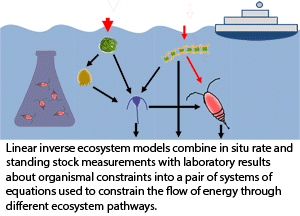FSU Plankton Ecology and
Biogeochemistry Lab
Outreach
This portion of our website is specifically designed to showcase our research for other oceanographers. If you would like a broader overview of our work that was designed to be more accessible to the general public, please click on the 'Outreach' link on the top right.
Contact: Mike Stukel (mstukel@fsu.edu)
Florida State University
Dept. of Earth, Ocean, and Atmospheric Science
Center for Ocean-Atmospheric Prediction Studies
